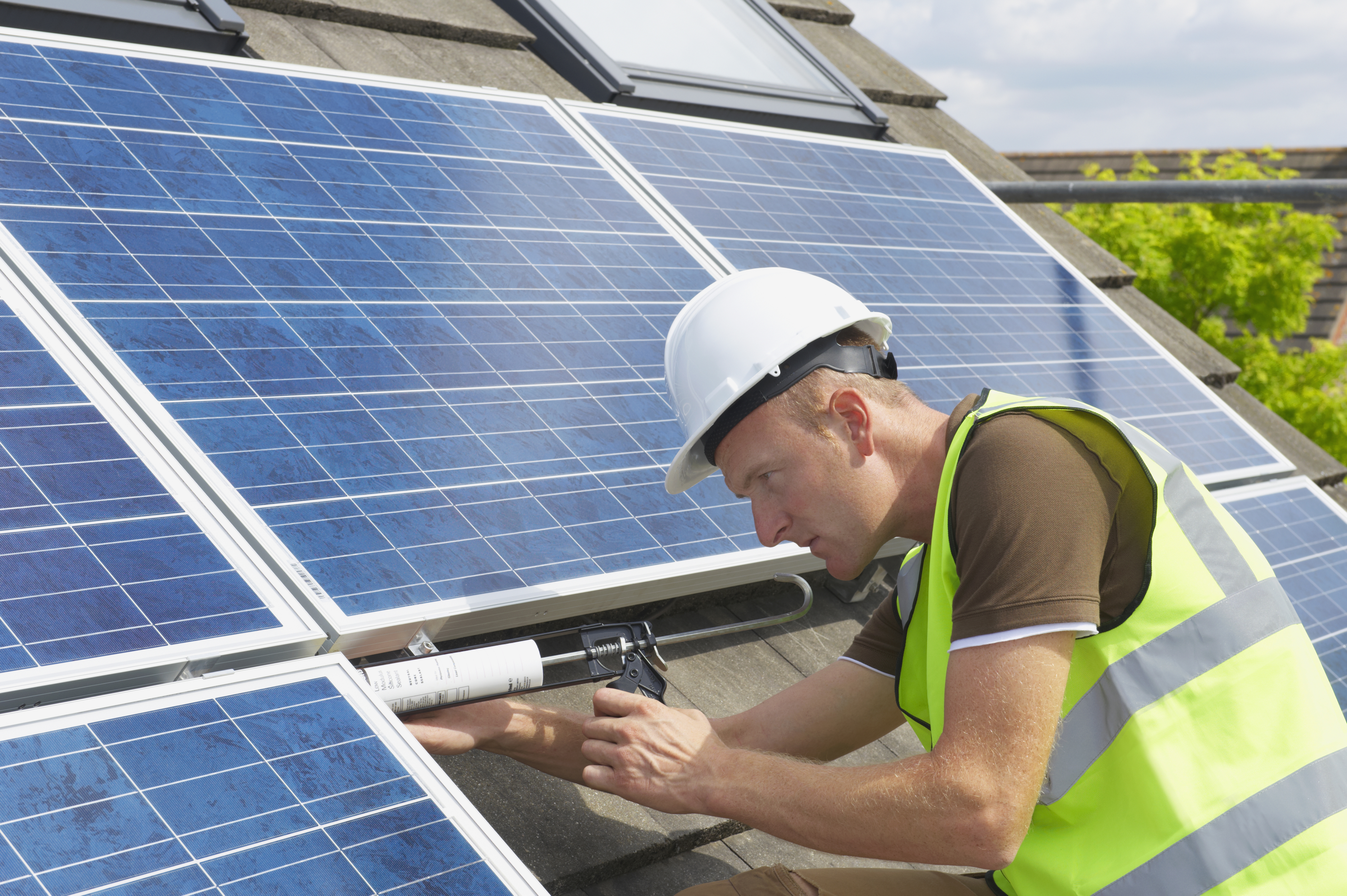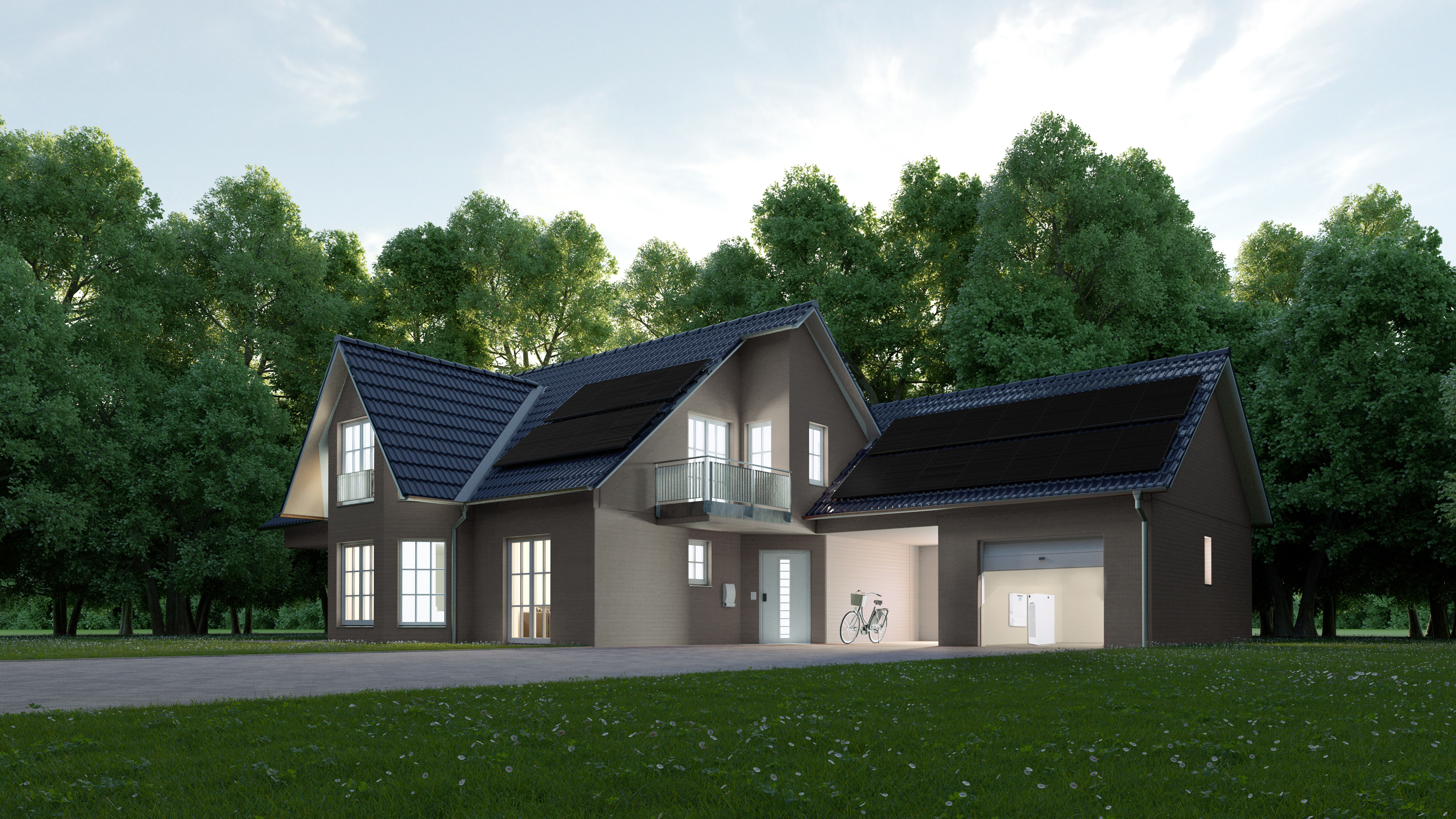Going net-zero at home can provide many benefits — from less reliance on fossil fuels to much lower energy bills. Solar power is a great way to get there.
A net-zero house produces the same amount of renewable energy that it uses throughout the year. To be entirely dependent on solar, however, you’ll need to work around the fact that solar panels don’t produce electricity all day. That’s where battery storage comes in — your batteries will store any excess energy your solar panels generate during the day so that you can use it later.
But how many solar panels and batteries would you need to have a net-zero home? Is your roof large enough to produce all the electricity your house consumes? We spoke with Panasonic Solar & Energy Storage division engineers to find out.
How many solar panels do I need to produce all of my power?
“"When sizing systems for net zero, the system installer would ask for a homeowner’s utility bill from the past year, and calculate their average kilowatt hour use,” says Nathan Garvey, application engineer for Panasonic North America. “Then it's pretty easy to calculate the size of a solar system they need to offset their net electricity use.”
But if a home uses a lot of electricity or has a relatively small roof, it might not be big enough to be net zero. According to Garvey, “A lot of times, the size of your solar array is going to be limited just by the square footage of your roof and having the solar panels on the correct plane.
“You only want solar panels facing south or southwest,” he adds. “If they're facing north, they're not going to get a lot of sunlight. A lot of times that's your constraint, and you just can't fit more.”
Obstructions on the roof, such as chimneys, dormers, and skylights, reduce the available space for solar panels. The solar energy output will also depend on your climate. The same solar system in San Diego or Phoenix would produce more electricity each year than an identical system in Seattle or Chicago.
Most residential solar systems are between 5 and 8 kW. A 410-watt Panasonic Evervolt solar panel is 71.4 inches by 40 inches, or almost 20 square feet. You would need about 12 panels for a 5-kW system or around 20 for an 8-kW system.
How many solar batteries do I need?
“When sizing a battery bank, it gets quite a bit more complicated than sizing the solar system because it's not a net application; it's a real-time thing,” says Garvey. “You've got to have enough battery power for your heavy loads and sufficient storage to get through inclement weather.
“With solar batteries, you can probably cover around 90% of your use cases just by estimating how many kilowatt hours of capacity you will need for one day,” he adds. “Usually, you will get some sunlight the next day, and even when it's cloudy, your solar panels will produce some energy.”
When determining how much battery capacity your home needs, it’s essential to consider both power and energy. Although many people think of them as synonymous, they aren’t. According to Garvey, “Power is like your instant demand — how many things you can run at once. And then energy is related to how long the power will last.”
Therefore, when sizing a battery bank, it’s critical to consider the specific loads during a power outage. “The installer goes through with the homeowner and identifies the appliances they want to keep on [during a blackout],” says Garvey. “Then they'll come back to us and say, ‘The homeowner wants this air conditioner, this room full of lights, and a refrigerator.’ Then we say, ‘OK, you're going to need this and this system.’ In this case, it's really about power output because an air conditioner draws a pretty high level of power.”
For this reason, the batteries often run less power-intensive appliances and electronics, such as Wi-Fi routers, cellphones, laptops, LED lights, fans, and the electrical components on furnaces.
Photo courtesy of Panasonic Eco Systems NA
“There are different ways to achieve the net-zero functionality using batteries, but it heavily relies on the energy-efficiency practices of the home,” says Vikki Kumar, systems engineering manager for Panasonic North America. “It's about ensuring that the supply and demand match, with demand being the energy usage and supply being the battery capacity. We typically recommend homeowners implement energy-efficiency practices before installing the battery system so they can use energy efficiently.”
If the energy and power needs of the home are relatively basic, a 10- to 14-kWh battery is sufficient. However, you’ll need more energy storage batteries if you want to run heavier loads during grid outages, like an air conditioner, hot tub, or electric heating system.
Is it all right to install a system that is beyond net zero?
If you anticipate your power needs changing in the near future, it might be a good idea to oversize your solar system for your needs today. For example, if you want to get an electric vehicle, install a heat pump, or convert from a gas-powered clothes dryer, range, or water heater to an electric one, your electricity use will likely increase significantly. Therefore, adding more solar panels is a good idea if you have enough roof space.
Otherwise, whether it is logical to go beyond net zero depends on if and how your utility company compensates you for the excess solar electricity you supply to the power grid in the form of credits on your electric bills. Currently, 41 states, Washington, D.C., and Puerto Rico have net metering laws.
“Usually, the utility company pays solar system owners for any excess energy they send back to the grid, especially if it's a net metering application,” says Kumar. “However, there are some states where you don't want to send any power back to the grid because it's not incentivized.”
Most power companies pay a lower rate or even nothing for electricity beyond offsetting what the home uses. For example, if your house draws 15,000 kWh of power from the grid and supplies 17,000 kWh, the first 15,000 kWh offsets your personal use. After that, you will receive either a meager price per kWh for the excess or perhaps no compensation.
Therefore, installing a solar energy system that generates as much power as your home uses but not much more is generally better. Oversizing your system will not usually result in significant utility bill savings.
Net-zero homes have become more common recently due to solar technology advances and falling equipment prices. Although sizing the solar system with a year of electricity bills is relatively simple, sizing the battery storage system is a bit more complicated. Implementing energy-efficient practices, especially during power outages, helps make the battery capacity last longer.
Learn more about how Panasonic can help you find the best solar and battery storage solution for your home.





